Since inception BD’s tele boot line was too aggro and heavy for me to spend much time in, but I figured their alpine boots would be a hit for the training heel crowd. Then I tried a pair on and found out why that wasn’t so true. They weren’t bad, but they didn’t rock my world either. Cuff ROM was sub par and so was the fit. Admittedly I had zero options for on-the-hill adjustments, but it didn’t wow me making turns either. Just sort of okay.
This year the Factor MX gets a make over and it is more than skin deep. The improvements make it a worthy contender again. In a nutshell they’re on par with several other excellent, mid-weight boots (less than 4½ lbs./boot) that work equally well going down or skinning back up.
It’s all about the Down
In a side by side comparison with the Lange XT, a boot many consider to be the best AT boot that can take and deliver abuse in-bounds, downhill performance was indistinguishable. Maybe I wasn’t dishing out enough abuse, but the Factor MX had no problem holding an edge, fully living up to its claim of a 130 flex stiffness with an overlap Triax ® shell. It felt progressively stiff, not overly stiff like many ultra-lite, stiff AT boots do.
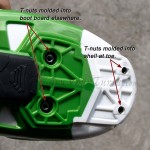
T-nuts are molded into the shell (very front) and the boot board to bolt the sole blocks to the lower shell.
Forward lean comes from the factory at 14°. You can increase that with an allen wrench and a few minutes of fussing to invert a block on the spine of the cuff. It isn’t trivial, but it’s not that hard either.
It’s all about fit
Dimensionally the boot has a semi-wide last – 100mm , but not as bucket sized as the Quadrant’s 103mm width. BD definitely added a few 3D shaping improvements to yield a better hold on top of your foot, all the way back to the navicular zone. Those with a low instep may still need to fill some volume, but the average height foot will be more secure, thus happier. A good chunk of that fit comes from the pre-lasting of a heat-moldable liner that, thankfully, comes without the BOA constrictor lacing. Eyelets are provided for those who want to use old-fashioned, lighter weight laces, but only if you insist.The liner has three different stiffness foams, strategically placed to enhance comfort in the toes and power around the lower leg. The tongue comes with a plastic shin plate for better alpine stiffness, which adds to the progressive flex of the boot. As any good AT liner has, the sole is rubberized for using as an apres slipper.
All about Cuff ROM
The marketing value for cuff range of motion is 40°, but that’s just what the cuff is capable of without a liner or your leg in the boot. In touring mode the Factor MX is at the high end of what is available, allowing your leg to angle back more than 16°, nearly double what BD’s Prime can do. That’s enough that you won’t feel any limits while skinning, and if you need more cuff ROM you should be looking at a skimo boot. Walking across the parking lot the Factor was more walkable than the XT, so if you’re doing dry trail for any distance, the Factor MX makes those sections a lot more bearable.
Buckles Schmuckles
Although there is nothing wrong with the buckles on the Factor MX, nor is there anything beyond the basic four-buckle configuration plus a velco power strap. Yes, the buckles are micro-adjustable, but there is no tour-tooth in the cuff ladders, nor do the buckles lock open. Standard issue stuff. Wouldn’t it be great if cost weren’t an issue and BD saw fit to add the EZ-Lock® ladders Garmont abandoned (probably due to cost) and a buckled power strap, ala the Cochise or Pinnacle? That would add some pizzazz to this functionally versatile boot.Conclusion
If you’re in the market for a mid-weight AT boot that lets you charge on any slope, any day, you’ll hardly go wrong with the Factor MX. It’s light enough for long tours, and strong enough for in-bounds abuse. As always, let fit be your final guide.
Black Diamond Equipment
Factor MX
MSRP: $770
Weight/boot: 4 lbs., 6 oz. (1985 g)
Includes Alpine DIN and AT sole blocks.
© 2013

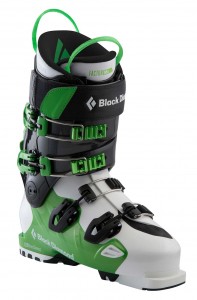
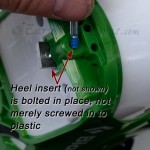
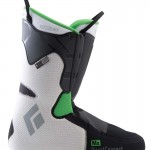
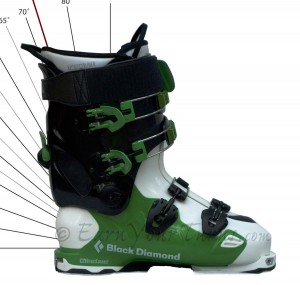
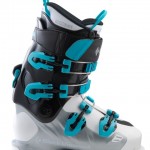
2 pings
[…] choice for long tours while delivering alpine caliber downhill control. Dynafit’s Radical, BD’s Factor MX, and Scarpa’s Freedom all had enough meat to handle speed and junky snow with a long stride […]
[…] Posts Review: Factor MX Review: BD […]